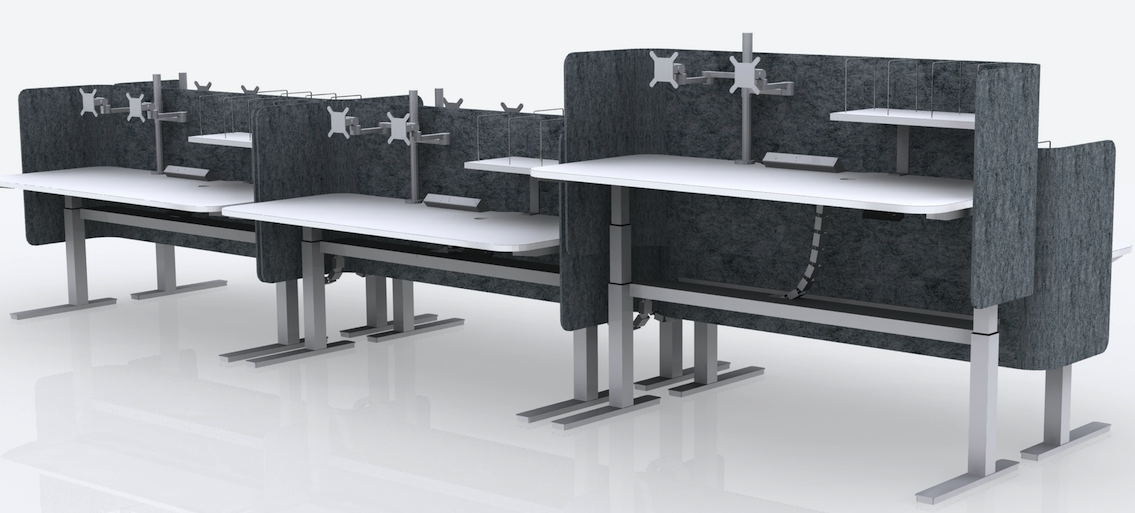
The Rise of Height-Adjustable Desks: Are They Worth the Investment?
The modern workplace is undergoing significant transformations. Traditional office layouts, characterised by fixed desks, are being replaced by adaptable, dynamic configurations. Among these innovations, height-adjustable desks have gained considerable attention for their potential impact on productivity and employee health. As companies seek ways to enhance worker well-being and foster productive environments, a pressing question arises: Are height-adjustable desks worth the investment?
What is a Height-Adjustable Desk?
Height-adjustable desks, also known as sit-stand desks, allow users to work while alternating between sitting and standing. Many of these desks feature electric or manual adjustment mechanisms, enabling individuals to customise their workstation according to their preferences throughout the day. The underlying principle is simple: by reducing the time spent sitting, height-adjustable desks aim to mitigate the adverse health effects associated with a sedentary lifestyle.
There are various types of height-adjustable desks, including those with electric adjustments, manual cranks, and fixed-height models. However, the crucial question remains: do they deliver tangible benefits that justify their costs?
Health Benefits of Height-Adjustable Desks
The health benefits associated with height-adjustable desks are a significant factor driving their popularity. With an increasing body of research highlighting the negative effects of prolonged sitting, these desks are viewed as a proactive solution to combat the health risks linked to sedentary behaviour.
1. Improved Posture and Reduced Back Pain
Office workers often struggle with back and neck pain, largely due to poor posture and uncomfortable seating. Height-adjustable desks encourage users to maintain a more neutral spine position, promoting better posture and reducing strain on the lower back. Many of these desks are designed with ergonomics in mind, enabling users to stand properly and minimise the risk of musculoskeletal disorders.
2. Increased Energy and Mental Well-Being
Numerous users report feeling more energised and alert when utilising height-adjustable desks. Standing promotes better blood circulation, counteracting the lethargy that frequently accompanies long periods of sitting. This boost in energy can lead to improved focus, productivity, and overall mental well-being. Additionally, incorporating height-adjustable desks into the workplace can contribute to a more dynamic office culture, where employees feel more engaged and active throughout their workday.
Productivity and Performance
Beyond the health benefits, height-adjustable desks are often touted as tools for enhancing workplace productivity. The connection between physical health and cognitive function is well-established, and these desks can play a vital role in boosting overall performance.
1. Enhanced Focus
Research indicates that standing can improve cognitive function and focus, resulting in increased productivity. When individuals are standing, they tend to be more alert and less prone to the sluggishness that often accompanies extended sitting. This heightened awareness can enhance task management, problem-solving, and decision-making abilities.
2. Varied Work Postures
Height-adjustable desks allow employees to switch between sitting and standing throughout the day. This variability can prevent physical discomfort associated with prolonged sitting and improve focus by facilitating movement. Studies have shown that changing postures periodically can help maintain cognitive performance and reduce fatigue.
3. Collaboration and Engagement
In collaborative office environments, height-adjustable desks can promote a more interactive atmosphere. Employees using these desks may feel more inclined to engage in spontaneous discussions with colleagues, exchange ideas, and move around the office. This fosters a fluid, creative environment conducive to collaboration.
Financial Considerations: Is the Investment Justified?
Height-adjustable desks can vary widely in price, from basic models starting at a few hundred dollars to advanced motorised versions costing over a thousand. So, are they worth the investment?
1. Long-Term Health Savings
While the upfront cost of height-adjustable desks may seem significant, potential savings in healthcare costs should be taken into account. The health risks associated with prolonged sitting—such as heart disease, obesity, and musculoskeletal problems—can lead to long-term medical expenses and decreased productivity due to absenteeism. Investing in height-adjustable desks can help mitigate these risks, ultimately resulting in fewer sick days and reduced healthcare costs.
2. Increased Employee Satisfaction and Retention
Providing height-adjustable desks can enhance employee satisfaction, as workers appreciate an employer’s investment in their health and well-being. Employees who feel valued and supported are more likely to be motivated and engaged, leading to higher job satisfaction and improved retention rates. This can save companies significant costs associated with high turnover.
Potential Downsides and Considerations
While height-adjustable desks offer numerous benefits, there are some potential downsides to consider.
1. Standing Too Long
Just as prolonged sitting can lead to health issues, standing for extended periods can also result in discomfort. Prolonged standing can cause leg fatigue, foot pain, and even varicose veins. Therefore, it is essential to use height-adjustable desks as part of a balanced approach, alternating between sitting and standing throughout the day.
2. Ergonomic Challenges
Proper ergonomic setup is crucial when using height-adjustable desks. If not adjusted correctly, these desks can lead to new issues, such as neck strain or shoulder pain. Providing ergonomic training and ensuring desks are set to the appropriate height are essential for maximising benefits.
Are Height-Adjustable Desks Worth the Investment?
Height-adjustable desks represent more than just a passing trend; they signify a shift towards prioritising workplace wellness. While the initial investment may be substantial, the potential health benefits, productivity gains, and long-term cost savings make them a worthwhile consideration for businesses and individuals alike.
However, to maximise their effectiveness, height-adjustable desks should be part of a broader strategy that promotes movement and variability throughout the workday. Encouraging a mix of sitting and standing, taking walking breaks, and providing ergonomic training can help create a healthier, more productive work environment.
The rise of height-adjustable desks reflects a growing awareness of the adverse effects of sedentary work habits. By investing in these desks, companies can foster a more dynamic, engaged, and healthier workforce, ultimately leading to long-term benefits that far outweigh the initial costs. In this evolving landscape of workplace design, height-adjustable desks are not just an option—they are a valuable investment in employee health and productivity.



